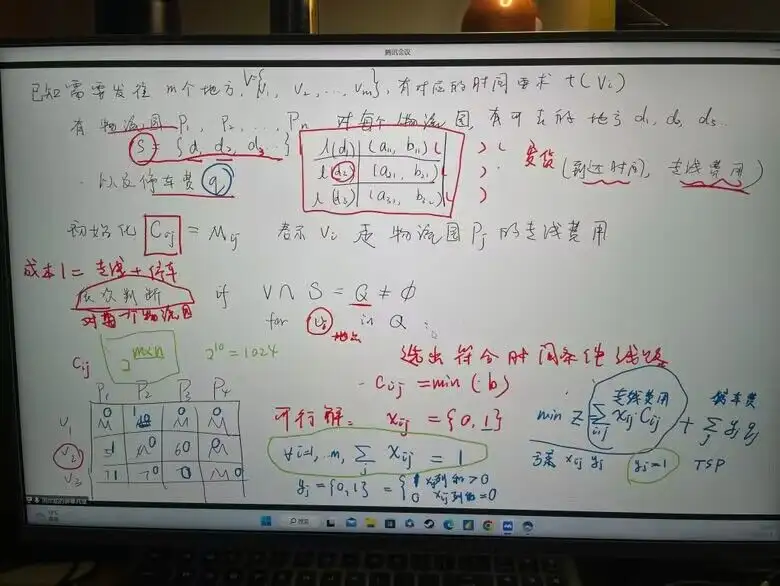1
2
3
4
5
6
7
8
9
10
11
12
13
14
15
16
17
18
19
20
21
22
23
24
25
26
27
28
29
30
31
32
33
34
35
36
37
38
39
40
41
42
43
44
45
46
47
48
49
50
51
52
53
54
55
56
57
58
59
60
61
62
63
64
65
66
67
68
69
70
71
72
73
74
75
76
77
78
79
80
81
82
83
84
85
86
87
88
89
90
91
92
93
94
95
96
97
|
class Goods:
def __init__(self,destination,deadline,weight,volume):
self.destination = destination
self.deadline = deadline
self.weight = weight
self.volume = volume
class Logistics:
def __init__(self,name,Latitude_and_longitude,rates):
self.name = name
self.Latitude_and_longitude = Latitude_and_longitude
self.commercial_tenants = []
self.rates = rates
def add_commercial_tenant(self,commercial_tenant):
self.commercial_tenants.append(commercial_tenant)
class Commercial_tenant:
def __init__(self,site,price,time_consuming,interval):
self.site = site
self.price = price
self.time_consuming = time_consuming
self.interval = interval
chengdu_site1 = Commercial_tenant('chengdu',15,4,3)
changsha_site1 = Commercial_tenant('changsha',12,4,2)
wuhan_site1 = Commercial_tenant('wuhan',8,3,2)
nanchang_site1 = Commercial_tenant('nanchang',15,3,2)
chengdu_site2 = Commercial_tenant('chengdu',7,4,3)
changsha_site2 = Commercial_tenant('changsha',16,4,2)
luoyang_site2 = Commercial_tenant('luoyang',8,3,2)
zhenzhou_site2 = Commercial_tenant('zhenzhou',15,3,2)
chengdu_site3 = Commercial_tenant('chengdu',41,4,3)
changsha_site3 = Commercial_tenant('changsha',17,4,2)
nanyang_site3 = Commercial_tenant('nanyang',8,3,2)
hefei_site4 = Commercial_tenant('heifei',15,3,2)
chengdu_site4 = Commercial_tenant('chengdu',21,4,3)
changsha_site4 = Commercial_tenant('changsha',13,4,2)
beijin_site4 = Commercial_tenant('beijin',8,3,2)
nancahng_site4 = Commercial_tenant('nanchang',15,3,2)
wuliuyuan1 = Logistics(1,'13.173;31.321',15)
wuliuyuan2 = Logistics(2,'12.125;35.321',10)
wuliuyuan3 = Logistics(3,'13.553;34,321',15)
wuliuyuan4 = Logistics(4,'12.123;34.111',10)
wuliuyuan1.add_commercial_tenant(chengdu_site1)
wuliuyuan1.add_commercial_tenant(changsha_site1)
wuliuyuan1.add_commercial_tenant(wuhan_site1)
wuliuyuan1.add_commercial_tenant(nanchang_site1)
wuliuyuan2.add_commercial_tenant(chengdu_site2)
wuliuyuan2.add_commercial_tenant(changsha_site2)
wuliuyuan2.add_commercial_tenant(luoyang_site2)
wuliuyuan2.add_commercial_tenant(zhenzhou_site2)
wuliuyuan3.add_commercial_tenant(chengdu_site3)
wuliuyuan3.add_commercial_tenant(changsha_site3)
wuliuyuan3.add_commercial_tenant(nanyang_site3)
wuliuyuan3.add_commercial_tenant(hefei_site4)
wuliuyuan4.add_commercial_tenant(chengdu_site4)
wuliuyuan4.add_commercial_tenant(changsha_site4)
wuliuyuan4.add_commercial_tenant(beijin_site4)
wuliuyuan4.add_commercial_tenant(nancahng_site4)
huowu1 = Goods('chengdu','2023/3/10',1,1)
huowu2 = Goods('changsha','2023/3/10',1,1)
huowu3 = Goods('nanyang','2023/3/10',1,1)
|






